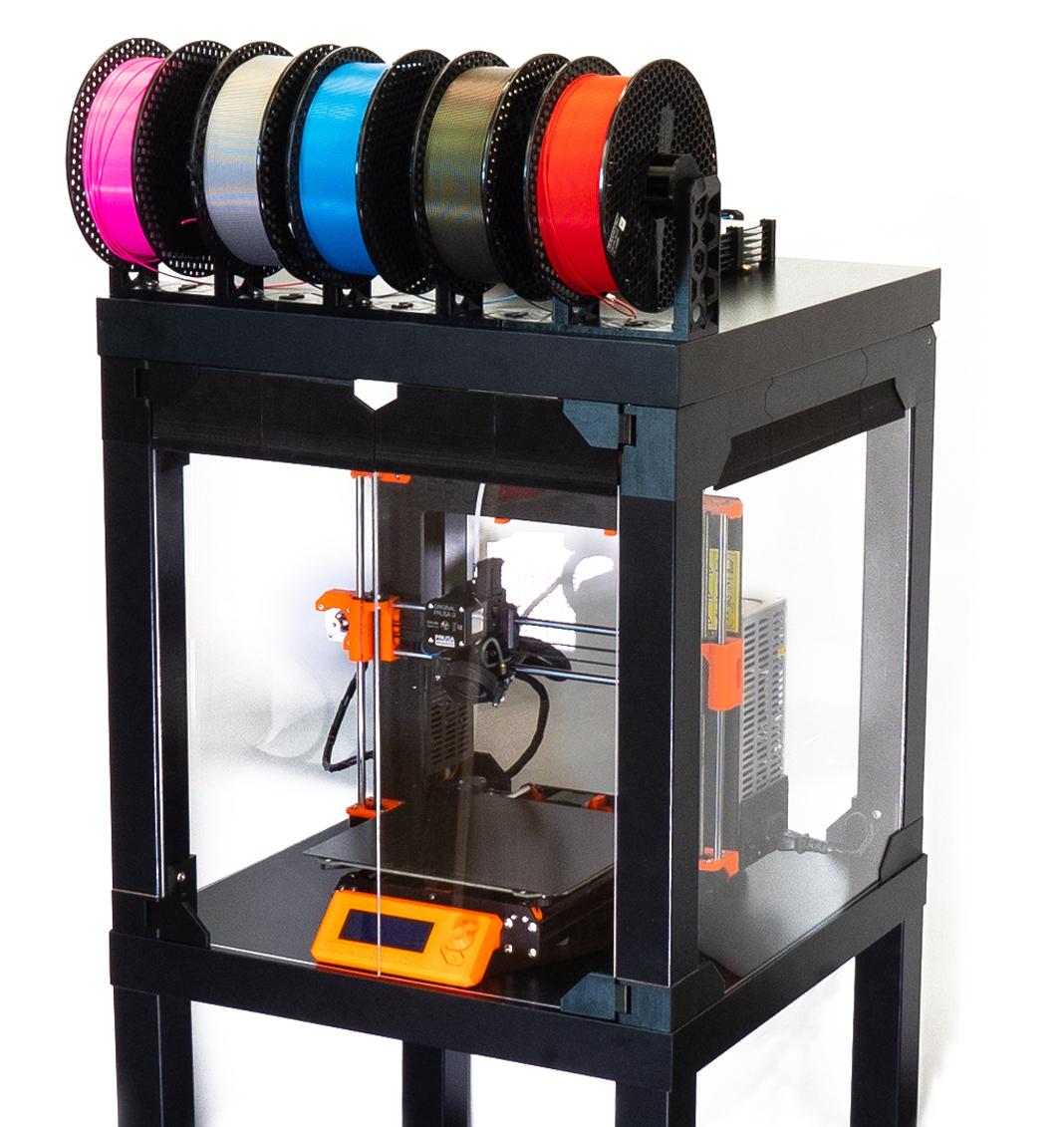3D Printering: Why Aren’t Enclosures Easier?
For 3D printers that aren’t already enclosed, why is easily adding a cheap and effective enclosure still not a completely solved problem? The reason is simple: unless one’s needs are very basic, enclosures are more than just boxes.
Different people need different features, printers come in different shapes and sizes, and creating something that can be both manufactured and shipped cheaply is a challenge in itself. In this article I’ll explain how those things make boxing up your printer a tougher nut to crack then may seem at first glance.
Enclosures Have Different Jobs
People have different expectations of what an enclosure’s job should be, and that determines which features are important to them and which are not. Here is a list of meaningful features for 3D printer enclosures; not everything on this list is important to everyone, but everything on this list is important to someone.
Improving Print Quality
An enclosure can provide a better printing environment by protecting against drafts and partially retaining heat, creating an environment with a temperature that is more stable than the room it occupies. While retaining too much heat can lead to its own issues, a stable and draft-free environment is a plus.
Reduction of Noise
Some printers are noisier than others, and not every printer has the luxury of chattering happily away on a workbench without disturbing anyone. Though it’s rarely the sole factor in noise control, an enclosure can help reduce noise in environments where it is an issue.

Protecting Moving Parts
In some environments, loose objects or curious fingers (or paws) are more common than others. An enclosure helps keep the moving parts of a printer safely away from anything that might interfere with, or damage, them.
Staying Clean
Enclosures help keep dust away, but can also perform functions like air filtering and can help with humidity control.
Device Mounting and Cable Management
Mounting and wiring for devices like a webcam, LED lighting, or a Raspberry Pi running OctoPrint becomes much easier and tidier with an appropriate enclosure.
Improved Storage
An enclosure that allows the machine to be more easily moved, or even stacked, can have a lot of value in a workshop where bench space is limited, or printing is only done occasionally. I’ve personally always aimed to have my printers enclosed, at a comfortable working height, and on wheeled bases so that they can be moved as needed.
It is impractical to have an enclosure attempt to do everything, which means that features need to be chosen carefully to match needs. This is especially true if costs are to be kept to a minimum. However, a number of factors complicate this.
Complications Abound
Anyone can make a great enclosure if money and materials aren’t a factor. But if the goal is to implement a design both cheaply and effectively, the issues below make that more of a challenge.
Doing Everything Isn’t Practical
Accommodating every need while still being both economical and effective is impractical, and also probably impossible. Therefore, enclosure designs need to pick and choose their features, with the result being that not everything works for everyone. This goes a long way toward explaining the seemingly endless variety of design solutions that greet people who look online for printer enclosures.
Aside from DIY solutions, there have been efforts to create enclosures that can be offered as products. Here are a few of the very different approaches organizations have taken to try to make enclosures easier:
Even DIY Enclosures Can Get Expensive Easily
I want to share a quick word on costs. I discovered first hand how quickly and easily enclosures can get expensive when I built my own Prusa Printer Enclosure V2.
I used locally-sourced materials whenever possible, but it was surprisingly expensive by the time I was finished. I needed two LACK tables, three spools of PETG filament (for over 2 kg worth of printed parts), an acrylic sheet from a local supplier (which they cut into the panels needed at a reasonable price), plus the cost of other hardware like magnets and screws.
According to my spreadsheet, I easily spent over $200 USD on materials alone, and that amount doesn’t even include additional parts I added like fire alarm, caster wheels, and LED lighting. It would have been even more expensive if had I needed to pay shipping on parts instead of picking them up locally.
Designs Must Pick and Choose
Unless using a pop-up photo tent as an enclosure will satisfy all of one’s needs, an effective solution that can be manufactured and shipped cheaply remains a considerable challenge. Enclosures aren’t just boxes, and different people have different needs.
Until someone comes up with something very clever, a cheap and effective drop-in solution will remain something plenty of people search for, but few find a satisfying solution to. Still, hackers being hackers, there is no lack of solving one’s own problems when it comes to printer enclosures.
Do you have a favorite solution, or clever idea that would make enclosures easier? We’re sure you do, so let us hear all about it in the comments.







